Totsuka House¶
You’ll probably be staying at the house in Totsuka, known as “Totsuka House” (戸塚ハウス). If not, you can skip this section (or better - write to me about where you stayed, so I can add it to this document).
Totsuka is one of 18 wards within Yokohama.
The house belongs to a company named “Kanex”, and stands mostly empty. They have hosted Aikidoka numerous times before, and I hope that it will stay that way in the future, as it’s comfortabe, relatively close to the higashi-totsuka dojo, and fairly affordable compared to other options.
Address¶
The address of the house is:
1240-1 Yoshida-cho
Totsuka-ward
Yokohama
Japan
You will need to know that address while in the plane, as you are required to fill in an entry form, and you might be asked about it at the entry.
Keep that address in your wallet while in Japan, but you probably won’t have any use for it. There are no street names, nor any numbers anywhere on the houses.
Here is the gate:

and here is the door, so you recognize it when you come in:
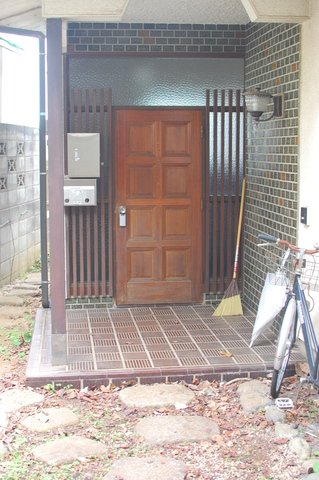
Getting there¶
The closest train station is Totsuka (Totsuka-eki in Japanese). From the train station it is about 1km of walk uphill, that takes about 15 minutes.
From Narita Airport To Totsuka-Eki¶
The easiest and fastest way is to use the Narita Express. It’s takes just under two hours, and the seats are reserved and comfortable. It costs about 4400 JPY.
The cheaper option is to take the Sobu line to Tokyo station, and from there the Yokosuka line bound for either Kurihama, Zushi, Ofuna or Yokosuka. Most times the train continues through and you won’t even have to change trains in Tokyo station. The trip takes about 2:15 hrs (about 30 minutes more than the Narita Express), and costs about half - 2200 JPY.
From Haneda Airport To Totsuka-Eki¶
If you arrive to Haneda from an international flight, you will arrive to the 2nd floor. After passport control, baggage claim and customs, the trains entrance is at the same floor, and the bus depart from the first floor.
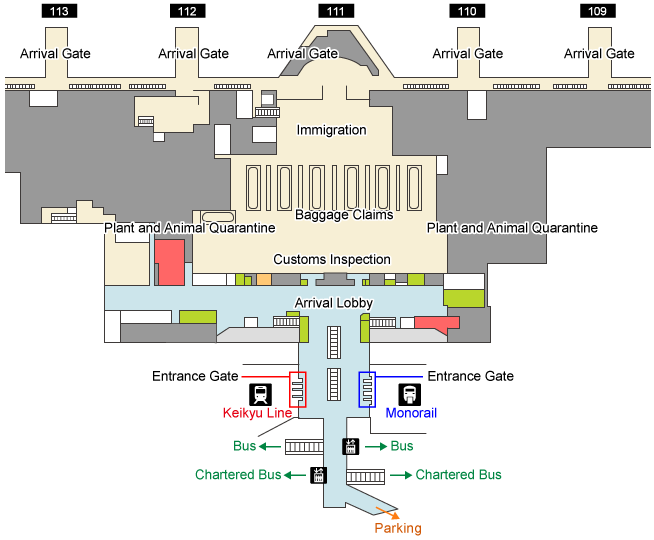
From here, you can take the bus or the train. There are two buses a day that will take you directly to Totsuka (see below). If you can’t get these, you will need to get to Yokohama first, by bus or train, and from there take the train to Totsuka.
By Bus to Totsuka or Yokohama¶
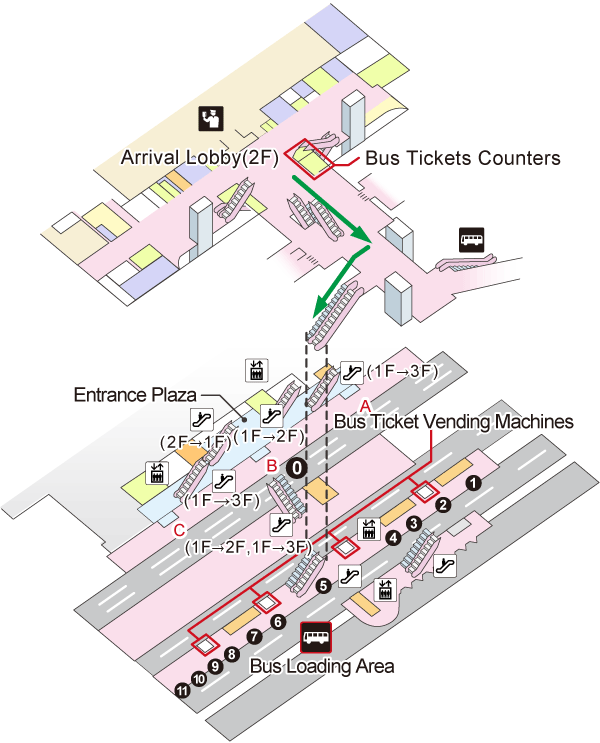
The bus terminal is on the first floor. Walk to the bus sign, and take the stairs down on your right or left. Here’s a recording of the walk from the arrival hall:
There are two buses each day that go directly to Totsuka. If your arrival time agrees with this schedule, try to take the direct bus. The buses leave from bus terminal 9 at 18:35 (6:35 pm) or 22:30 (10:30 pm) and take 1:15 hours to get to Totsuka.
Make sure to purchase a ticket from the vending machine next to the bus terminal.
If you can’t make the direct bus, take the bus to Yokohama Railway Station (YCAT). These leave from bus terminal 7 every 20 minutes or so.
By Train to Yokohama¶
Here’s a video that shows the walk from the arrival hall to the Keikyu line entrance.
At the Keikyu Airport line, take a direct train to Yokohama, if one is available at the time of your arrival. If not, take any train from platform 2, and get off after 5 stops at KeiKyu Kamata (KK-11). At KeiKyu Kamata, change to the KeiKyu main line for Yokohama (3rd floor, platform 1, 2 or 3). Ride the train and exit at Yokohama (KK-37).
From Yokohama¶
From Yokohama (whether you arrived by bus or train), take the Yokosuka line to Zushi or Kurihama, and get off at Totsuka.
From Totsuka train station to Totsuka House¶
Get off at the platform (you should arrive at platform 4 or 3), and find the escalator to go up. If you have heavy luggage, find the elevator that goes up. There are escalators and an elevator down, but don’t take them.
Here’s a map of the station. I don’t know if the map is helpful, but here it is in case it helps you:
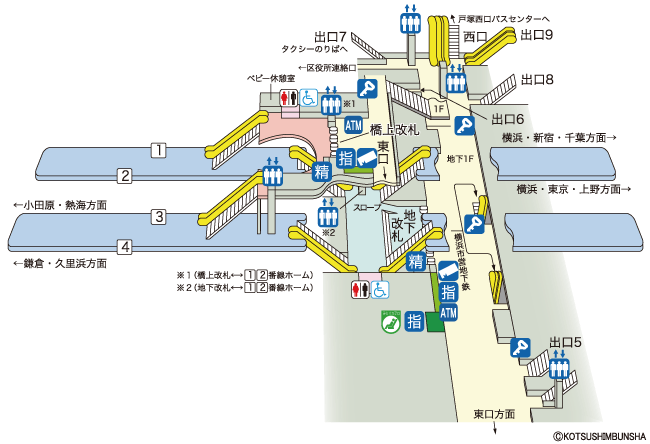
Once up, get out of the gates, and turn right. After about 20 meters you’ll be above the Totsuka Bus terminal. If you have heavy luggage, the elevator will be on your right. Take it one level down, from the elevator take a left, walk around the bus terminal and cross the road. Instead of the elevator, you can keep going straight, and at the end take a right and go down the stairs.
You should be now very close to the start of the recorded route. Load it up on your phone and follow it. It will take you north along the river, cross the river on the second bridge, turn left, then a right, and from there traverse up the alleyways to the Totsuka house. If you can’t use the recorded route on your phone, just keep going up - the Totsuka house is on the highest part of the hill.
You can also take a taxi, but I’ve never done it. They should stop at the beginning of the pedestrian path of about 40 meters.
Route |
Totsuka Station to Totsuka House via the river bank |
Start |
Totsuka Station |
End |
Totsuka House |
Distance |
1.4 km |
Duration |
15 minutes |
KMZ file |
|
GPX file |
Route |
Totsuka Station to Totsuka House no highways |
Start |
Totsuka Station |
End |
Totsuka House |
Distance |
1.4 km |
Duration |
15 minutes |
KMZ file |
|
GPX file |
See Using the provided routes for information on how to use the routes.
At the Totsuka House¶
The house is quite big (it’s two houses merged together). It has two kitchens, two bathrooms, one tatami room (8 mats), 3 smaller rooms, and two more upstairs that were closed off when I stayed there. It can house 8 people quite comfortably (or more if all the rooms upstairs are available), but more can fit in as well.
Expenses¶
It’s best to discuss with the group you’re with at the beginning of your stay how to manage the expenses for the food and cleaning materials (laundry detergent, mostly).
The easiest way we came up with was that everyone contributes the same amount onto a jar at the same time (say 2000 JPY), and all the purchases are made out of the jar. When the jar empties, everyone is asked to contribute again. If someone uses their own money to buy common stuff, have them take the amount on the receipt from the jar – the earlier the better. Alternatively they can write their name on the receipt, put it in the jar (as a sort of an IOU), and take the money later.
Depending on the habits of the people of the group, alcohol can be part of this, or can be bought individually (for example, if someone doesn’t drink, a separate alcohol jar could prevent frustrations).
It has been our experience and estimate that we spent about 500 JPY per day on groceries, alcohol and cleaning materials.
Groceries¶
Note
I am told the mall was torn down and is being rebuilt. It will take a couple of years to build. In the mean time, I think the closest option for groceries is in the Totsuka train station (Totsuka Eki)
The closest store is in the Aeon mall down the hill, about 5 minutes down and 7 up (See recorded route on how to get there).
Once in the mall, take a right, a left at the pet store, and keep going straight all the way for the grocery store. The mall opens at 10, but the store opens earlier – there’s an entry from the left side of the building if you need breakfast supplies early. The store and the mall close at 10pm.
Starting at 6pm, fresh fish and meat that might go bad will be offered on an increasing discount as time goes by, going at about a third (!) of the price by 10pm. Buying sashimi or fish at around 9pm is your best bet for a low cost protein. It worked best for us to take the bus at around 9:30 pm from higashi-totsuka and hit the store at 9:50 pm for a ridiculously cheap belated dinner.
Route |
Totsuka House to Aeon Mall |
Start |
Totsuka House |
End |
Aeon Mall |
Distance |
500m |
Duration |
7 minutes |
KMZ file |
|
GPX file |
See Using the provided routes for information on how to use the route.
Rice¶
There is a rice dispenser on the bottom left cupboard in the first kitchen, and a rice maker. 4.5 cups of rice is about right for 4 people. Depress the 4.5 level on the dispenser to fill in the rice. Rinse it and fill in water so it’s a knuckle above the rice.
To start the machine, press the button on the right (スタート). Rice will be ready in about 40 minutes.
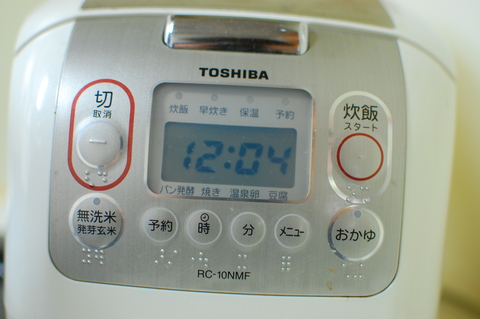
To set the timer, first make sure the displayed time is correct (Note, Japan uses a 24 hrs clock, so 21:00 is 9pm).
If you need to set the clock, press a long press on the button with the clock icon, then press it to change the hour, and the button to the right of it to change the minute. Another long press will set the time.
To set the timer, press the timer button (bottom left), then use the same buttons you use to set the time, this time setting the time you want rice to be ready. Press the start button, and that’s it.
Once the rice is ready the machine will display the amount of hours that have passed since. Starting with 0h, then 1h and so on.
To warm up rice that got cold, press the start button three times for the third option.
Bath (Ofuro)¶
The bath in japan has a different function than the bath in the west. In Japan you clean yourself thoroughly before getting into the hot water. You then sit in the hot water for relaxation only, and the water is kept clean. Once you are done, you get out, and the next person does the same, reusing the same water.
To turn the water heater on, press the power/start button on top the left. Then you can select the shower temperature on the display on the left.

To fill the bath, press the button on the top right. It will fill the bath with new water in the temperature displayed on the right. Please be aware that this will overfill the water until stopped, so be sure to remember to turn it off after it’s full to the desired level.
If the Ofuro got cold but is still clean and you want to reheat it (or even while you’re in it), press the middle button on the right. It will reheat the water to the desired temperature and stop when it reaches it. This function will not add water to the tub, just reheat the existing water.
Please turn the heater off after you are done by pressing the On/Off button.
Shoes¶
In Japan there is a very clear and very strict separation between inside and outside. Outside is “dirty”, inside is “clean”, and they never mix. A toilet is considered “dirty” as well for that matter. You probably know that from your own dojo, but there are some more rules to follow in a Japanese house.
Please take off your shoes upon entering the house, and step in with your socks or bare feet. Place your shoes neatly on the floor, facing outside.
To go to the washroom, use the supplied slippers in each washroom. Upon leaving the washroom, leave the slippers facing toward the inside of the washroom, so the next person can easily slip into them.
To step outside (for example to hang laundry on the line), use the supplied slippers outside, the same way as the toilet. Upon entering back to the house, leave the slippers facing outside, to make it easy for the next person to slip into them when they go out.
Please avoid going outside in your bare feet.
Laundry¶
There are two washers at the house, but no dryers. Dryers are almost unheard of in Japan except in coin laundries. Humidity is often high and it takes time to dry. That’s why it’s recommended to have at least 2, preferably 3 dogi with you.
To start the small machine in the hall, fill in the laundry and press the start button (top right - スタート). It will start the water after a few seconds. Put in the detergent and close the lid. The display shows the amount of time to finish.
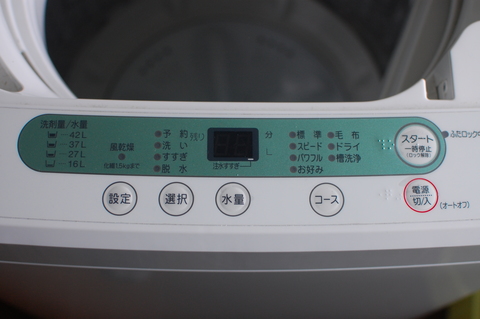
The bigger machine in the bathroom in the back requires two clicks - the “on” button on the right, then the start in the middle (スタート). The rest is the same.
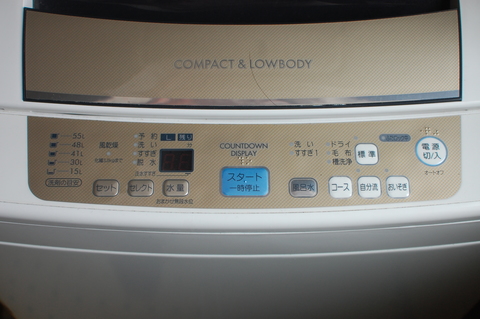
Entering/Leaving the house¶
The custom in Japan is to announce your leaving and entering the house. You don’t have to do it at the totsuka house, but it’s fun and will help you get the Japanese feeling.
After you have your shoes on before you leave, holler “Ittekimasu” (I’m leaving), to which you will be answered with a holler of “Itterashai” (have a safe trip).
When coming back home, yell “Tadaima” immediately after opening the door, to which you will be answered “Okaeri Nasai”.
This is quite fun, and I ended up doing it at my own home a year after the visit :)
Shutters¶
There are shutters for every window at the house. If you are sensitive to light in the morning, be sure to close the shutters before you go to sleep. The shutters are tucked in a box on the outside wall next to each window. Pull one and slide it all the way, then pull the next until it’s all closed. The large tatami room has 4 shutters to pull out, which is a bit tricky, but doable.
Trash¶
Probably one of the most challenging tasks for foreigners in Japan is getting rid of trash. Garbage needs to be carefully separated, and then can be rid of only on certain days, early in the morning. It took us about two weeks to be able to get rid of the first piece of trash, and it felt like a real achievement.
The garbage truck schedule is posted on the wall of the kitchen from the dining area. Here’s a picture of it:

I translated the important items and days into English right there. Separate the trash according to the days (Compost, bottles, cans, plastic, paper, glass) and make sure to take it out early in the morning (before 9), or late at the night before.
To get to the trash bin go out of the gate, take a left, go down the stairs. At the end of the flight of stairs there a small gate to the left, go through it and the garbage bin is about 40 meters ahead, on your right. There is a marker for it on the map below.
If the garbage schedule posted is different than the one in the image, study the days of the week in Kanji, and adapt accordingly.
Heating¶
If needed, use the heater in the closet of the entry hallway. It works on gasoline. Press the large “on” button on the right and wait for it to start. It takes up to 5 minutes to start, so be patient. Don’t move it while it’s working, it doesn’t like that, and will turn off on you.
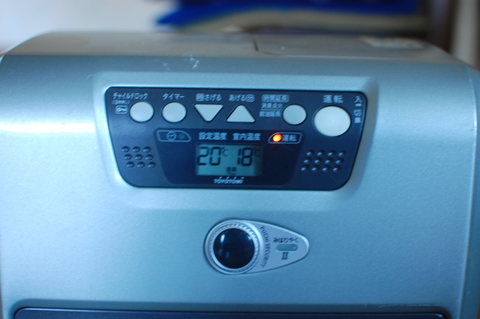
It might play a jolly tune at times to tell you stuff, but I’m not sure what it wants.
When it’s out of gas, lift the lid, and take the gas container out. Turn it upside down and open the cap (do this outside, as gas might spill). Fill in the gas from the jerrycan (under the stairs in the back, or in the shoes cupboard at the entry hallway), using the nozzle provided. Insert the straight tube to the jerrycan, and the flexible tube to the heater container, and pump. Once done, tighten back the cap, turn it over and slide it back to the heater all the way and close the lid.
I’m not sure where to buy more gas, can be discussed with the owners. A Jerrycan is about 1000 Yen.
Coffee¶
There is a coffee percolator at the house. Its operation is straight forward. You can get ground coffee at the store. There’s a coffee grinder at the store, so if you prefer, you can get whole beans and grind them there.